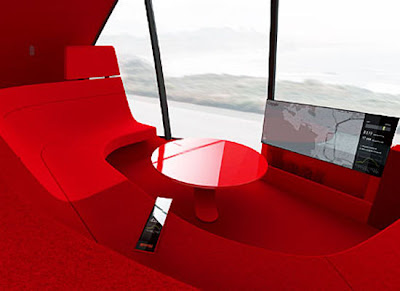ATNMBL Driverless Car
Autonomous cars, once a fantasy in movies and on TV, are now technologically possible. GPS, sophisticated sensors, and navigation databases will allow driverless vehicles to operate on the same roads we have today. It's inevitable that technology will eventually allow cars to outperform their former drivers. This will drastically reduce the fatality rate and provide new experiences that will enrich our lives.
To be released by 2040, the all-wheel-drive car or autonomous mobile (hence ATNMBL) doesn't have a steering wheel, brake pedal or drivers seat and drives entirely by itself.
The autonomous mobile is designed by the same people who contributed to the Google Phone.
The autonomous driverless car will not be implemented overnight, however, nor will it completely replace current forms of personal vehicles. Even when it is proven safer than human driving, not everybody will be instantly convinced. The new technology will slowly evolve in human-driven cars. . . and it's already happening. Today's cars are available with distance sensors, parking aids and other human overrides that we believe will evolve into an autonomous mode much like cruise control.
Once the technology has proven its capabilities and has been welcomed by the masses for its convenience and safety, the traditional layout of cars will start to change. Front seats will swivel to create a social setting and may even collapse to become beds for overnight driverless travel. Eventually, the steering wheel will be eliminated and cars will start to look drastically different inside and out.
The size of a parking space, the electric powered car will have an internet sitting room and can fit about seven people.

Autonomous Mobile Timeline
Autonomous Transporter Pods at Heathrow Airport
The autonomous bus

0 comments:
Post a Comment